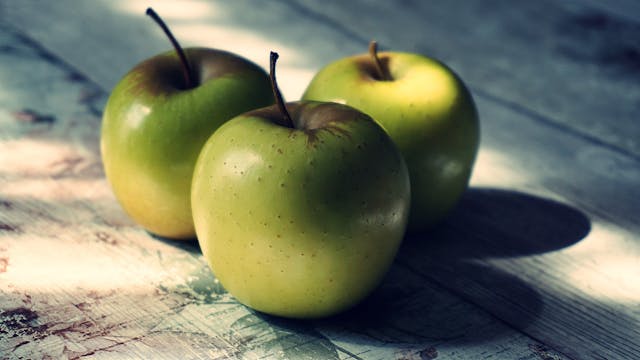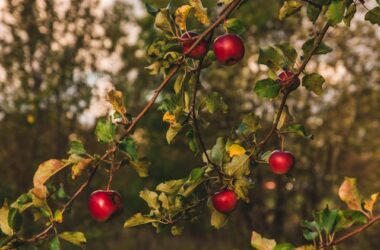Choosing the Right Variety
Best Green Apple Varieties for Home Gardens
- Granny Smith: Known for their tart flavor and crisp texture, Granny Smith apples are a popular choice for home gardens.
- Pippin: These apples are less tart than Granny Smiths and have a balanced sweet-tart flavor.
- Lodi: An early-season variety, Lodi apples are excellent for making applesauce.
Preparing the Planting Site
Climate and Location
Green apple trees thrive in USDA hardiness zones 5-8. Choose a location with:
- Full Sunlight: At least 6-8 hours of direct sunlight per day.
- Well-Drained Soil: Apple trees do not tolerate waterlogged soil.
- Space: Ensure there’s enough space for the tree to grow. Standard apple trees need about 20 feet of space, while dwarf varieties need about 10 feet.
Soil Preparation
- Test the Soil: Aim for a pH between 6.0 and 7.0.
- Amend the Soil: Mix organic compost into the soil to improve fertility and drainage.
- Clear the Area: Remove weeds and grass in a 3-foot diameter around the planting site to reduce competition for nutrients.
Planting the Tree
When to Plant
The best time to plant apple trees is in the early spring or late fall when the tree is dormant.
Planting Steps
- Dig a Hole: The hole should be twice as wide as the root ball and about 2 feet deep.
- Place the Tree: Position the tree so the graft union (the swollen area where the tree was grafted onto the rootstock) is 2-3 inches above the soil line.
- Fill the Hole: Backfill with the excavated soil, gently tamping it down to eliminate air pockets.
- Water Thoroughly: Water the tree deeply to help settle the soil around the roots.
- Mulch: Apply a 2-3 inch layer of mulch around the tree, keeping it a few inches away from the trunk to prevent rot.
Caring for Your Green Apple Tree
Watering
- Young Trees: Water deeply once a week.
- Established Trees: Water every 10-14 days during dry periods.
Fertilizing
- First Year: Avoid fertilizing to prevent root burn.
- Subsequent Years: Apply a balanced 10-10-10 fertilizer in early spring and again in late summer.
Pruning
Prune your apple tree annually in late winter to:
- Shape the Tree: Encourage a strong central leader and well-spaced branches.
- Remove Dead Wood: Eliminate any dead, diseased, or crossing branches.
- Improve Air Circulation: Thin the canopy to reduce the risk of disease.
Pest and Disease Control
- Common Pests: Codling moth, apple maggot, and aphids.
- Disease Management: Watch for signs of apple scab, fire blight, and powdery mildew. Use organic pesticides and fungicides as needed.
Pollination
Apple trees require cross-pollination to produce fruit. Plant at least two different varieties of apple trees within 50 feet of each other, or ensure there are compatible apple trees in your neighborhood.
Harvesting
When to Harvest
Green apples are typically ready to harvest in late summer to early fall. Harvest time can vary depending on the variety.
How to Harvest
- Pick by Hand: Gently twist the apple upwards and off the branch.
- Check for Ripeness: The apple should come off easily and have a firm, crisp texture.
Conclusion
Growing green apples at home is an enjoyable and fruitful hobby. By selecting the right variety, preparing the planting site properly, and providing consistent care, you’ll be able to harvest delicious, home-grown apples in a few years. Whether you’re a seasoned gardener or a beginner, following these steps will help ensure a successful green apple harvest.
For more gardening tips and tricks, subscribe to our newsletter and stay updated on the latest in home gardening!






